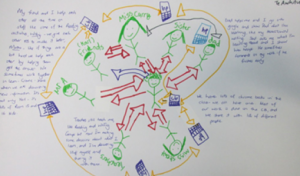Introducing Infinity Where the Learning Never Ends
/in Blog, NewsIntroducing
Infinity Where the Learning Never Ends
Written by Brian Annan and Mary Wootton.
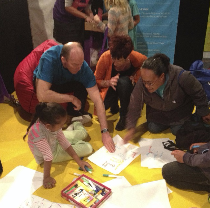 This post provides the backstory into our thinking about supporting kids in schools who find academic learning hard. That thinking gives you an insight into the design of Learning and Change Networks and Infinity learning Maps.
This post provides the backstory into our thinking about supporting kids in schools who find academic learning hard. That thinking gives you an insight into the design of Learning and Change Networks and Infinity learning Maps.
Many people are now asking us about the design features of those two developments because they are such compelling concepts. They contribute to lifting kids standards in academic learning and the pace at which things change for the better is remarkable. We know the x-factor elements within those strategies and we want to diffuse them into our schooling system and out into families, communities and the wider world.
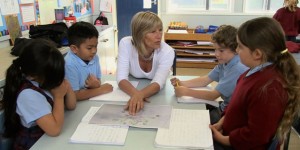 We would do your heads in (and ours!) if we tried to squeeze all those ideas into one post. So this post gives the backstory. Subsequent posts will share the gems that will be useful to schools trying to collaborate around addressing academic achievement challenges and growing student agency.
We would do your heads in (and ours!) if we tried to squeeze all those ideas into one post. So this post gives the backstory. Subsequent posts will share the gems that will be useful to schools trying to collaborate around addressing academic achievement challenges and growing student agency.
Backstory
Up until three years ago, we were having such comfortable career progressions. We had moved from teaching and leading in schools to providing PLD to schools and linking research and policy into the mix. Then our thinking got tipped upside down when we started delving into some global trends that we were told were going to change things in the schooling system whether we liked it or not. Global trends? You know, the education ideas that OECD and other gurus discover and then tell governments and regular humans like us how things are unfolding around the world.
A trend that caught our attention was the amazing growth of interest-based learning among kids around the world and the increasing boredom around academic learning. Learning interests just keep broadening. Many humans are now learning in diverse ways from the moment they wake up through to bedtime. They are also joining knowledge dots that were never before considered possible let alone of interest to anyone, like ‘lego connected to braille’ and ‘combining visual art and engineering’ and ‘purchasing real estate and DIY renovations as a virtual game’ – the mind boggles.
Meanwhile, schools were dealing with a lingering belief that it was OK for academic learning to be boring. It was a ghost-from-the-past belief that sat in many educators minds that all kids had to learn academic basics, boring or not. Kids who struggled with academics had to just suck it up, work harder and longer and get the job done. But that approach wasn’t working.
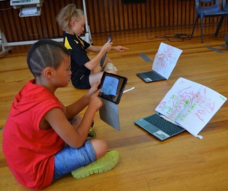 Forward-thinking schools, teaching professionals and new player organisations figured out that if they merged formal learning with interest-based learning they could turn the tide of disengagement. Innovative and entrepreneurial developments started sprouting such as passion learning days and digital learning connections between schools and families. A classic winner was rap singers going into schools in the South Bronx in New York to get kids who hated learning science to record their own rap songs using science content. Now the music labs are full and science results are much higher.
Forward-thinking schools, teaching professionals and new player organisations figured out that if they merged formal learning with interest-based learning they could turn the tide of disengagement. Innovative and entrepreneurial developments started sprouting such as passion learning days and digital learning connections between schools and families. A classic winner was rap singers going into schools in the South Bronx in New York to get kids who hated learning science to record their own rap songs using science content. Now the music labs are full and science results are much higher.
Those and other outlier examples modelled a way moving towards future-focused learning environments. Our definition of future-focused learning environments can be found in our article about Infinity Learning Maps.
It was a tall order, however, for entire schooling systems to transform quickly. They are, by nature conservative, and it would take time before they fully transformed to keep abreast of the learning explosion. To the credit of educational leaders and teachers around the world, they did sit up, take notice and start adapting, which avoided massive turmoil.
We were fortunate to be connected to GELP; Global Education Leaders Partnerships programme (http://gelponline.org/ ) at the time those events were unfolding. So we got an early warning about the potential turmoil alongside leaders from 13 countries around the world. It shook us out of our career comfort zones and we knew we and others had to come up with some new and different thinking. Our first thought was to bring home and immediately introduce the global trends to teaching professionals, kids and families. We believed those groups were capable of co-designing strategies to merge formal and informal learning and create future-focused learning environments. Design of the Learning and Change Networks and was the perfect opportunity to put that thinking into action.
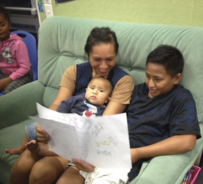 A critical principle for our design, therefore, was to get connected with global education trends and take them directly to those that needed to know about them the most. In this case it was the kids challenged by academic learning and their closest supporting adults – teachers, mums and dads – with support from school and community leaders.
A critical principle for our design, therefore, was to get connected with global education trends and take them directly to those that needed to know about them the most. In this case it was the kids challenged by academic learning and their closest supporting adults – teachers, mums and dads – with support from school and community leaders.
It was a no-brainer to take on the challenge of merging formal and informal learning in our design contribution to the Learning and Change Networks strategy and the creation of Infinity Learning Maps. Academic learning has to survive in some form as a gateway for all kids to succeed in future-focused learning environments. We believed that form had to activate greater responsibility among kids and their families to grow their learning environments. They had to flip from passive receivers of learning to active partners with teaching professionals and their families.
Keep your eye out for our next post where we concentrate on moving from passive to active learners. Still lots to do in that space.
Simple project lets kids take lead on learning
/in NewsOvercoming disadvantage is a tough ask. But it is a job schools are battling head-on as they seek to help all students achieve their potential. Kirsty Johnston reports in part three of our series looking at the great education divide.
http://www.nzherald.co.nz/nz/news/article.cfm?c_id=1&objectid=11540729
New!! Infinity Maps Workshops
/in NewsInfinity Maps workshops. Auckland and Wellington or contact us to set one up in your region.
Coming Soon!
The Creation and Impact of Infinity Maps
/in NewsInfinity Maps are a vehicle to grow student agency by connecting students, teaching professionals, families and whānau with one another and to global trends in learning. They are also a useful evaluative tool to review the growth of agency and the movements towards future-focused learning environments. Read more about the CREATION AND IMPACT OF INFINITY MAPS

